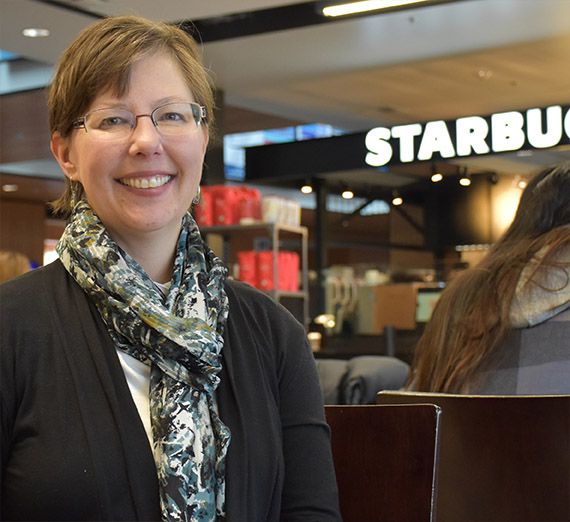New Core Gives Life to Faculty, Students

Brook Swanson, biology, and Suzanne Ostersmith, dance, are an unlikely pair. But together they are teaching the Art and Science of Dance as a first-year seminar in the new Core Curriculum, and their effort has been nothing short of amazing, says Molly Kretchmar-Hendricks, Core director.
“Their collaboration is great, and their students are receiving the advantage of both academic perspectives throughout the course,” Kretchmar-Hendricks says.
“Because of the interdisciplinary nature of the course, we find every student has an entry point into the material,” says Ostersmith. “The energy and excitement in the studio from the students for the subject matter is palpable. Our final assignment requires students to work in groups to communicate their science research through choreography. We have found this so effective, that I have created a touring performance/ presentation with dancers and Brook presenting his research on bio diversity. It will be touring to regional universities this spring.”
Political scientist Blaine Garvin, who has taught at Gonzaga for 46 years, admits to being a little trepid when he signed up to teach a first-year seminar, Governing Our Shared Lives Wisely, because teaching literature, science and other subjects were not familiar to him. But the experience has been transformative for Garvin and his teaching, as well as for his students. “At the spring faculty conference I spoke to colleagues about the first class. With all due respect to Myth and Reason in 1973, I said, this was the best, most satisfying teaching I’ve done at Gonzaga. Good things come to those who stick around and rouse themselves to take part in new adventures,” Garvin says.
And there are so many more examples. Check out these first-year seminar course titles, every one of them inviting: iStudent-Technology meets Humanity; Freaks, Geeks and Outsiders; Life on Mars; Jesuit Education-A Fire Kindling Other Fires. All of these are examples of the Core working for Gonzaga students, and giving them the breadth of study to propel them to future success.
“The Core to me is as important as a student’s major area of study,” Kretchmar-Hendricks says. “This new Core is intentionally designed as a four-year program, to enhance and enrich what students are learning in their majors. It is all brought together in the Core integration seminar during their senior years.
“Employers tell us that the ability to bring together students’ developing expertise in their majors with the dispositions, values and skills developed through the core – reading, writing and thinking creatively – is what really stands out in our students. They have a good grasp of ethics and social justice issues, which is so much a part of what we are all about. These are important values we’re educating around,” she says.
Kretchmar-Hendricks admits there remains some further development of the new Core. Some colleagues are finding they need time to more fully develop their new classes. The Center for Teaching and Advising offers a course design institute which has led faculty members to reimagine their teaching, not only in creating first-year seminars, but in ways that impact courses they’ve been teaching for years.
